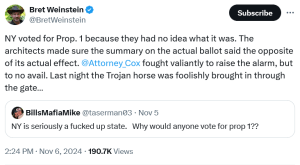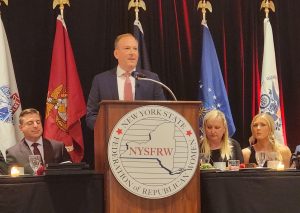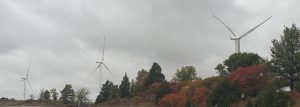Recently I was challenged on a FB post to answer the question: Why do you oppose renewables? It was a fair question. If I have a strong position on an issue, I ought to be able to back up why I hold that position. So, I sat down and penned the words below….
Let me explain. When it comes to human flourishing, energy matters. When energy is not abundant, people need to spend an excessive amount of time seeking and obtaining it. In our culture, consider “Little House on the Prairie” days when families had to cut and chop trees. Or consider tribal areas in Africa today where families are still relying on animal dung to heat their homes and cook their food. In both situations, obtaining adequate energy is time-consuming, and the fuel sources relied upon send particulate matter into the homes (and lungs) of families – leading to potential health issues. I imagine those who are today still relying on animal dung would probably prefer to have access to efficient natural gas or nuclear. I wonder if they ever dream about what they could be doing if the time they use to collect dried dung was free for other activities? I wonder if anyone in the modern push toward “net-zero” has asked them what they think and need?
To function well (or even at all), modern societies require reliable and affordable energy. Power from solar and wind is inherently unreliable, and this built-in characteristic of these energy sources will never change. They will always be unreliable because they will always be intermittent and dependent upon the unpredictability of sun and breeze. Thus, these sources will forever require a back-up that is available on demand to pick up the slack.
Today, the back-up is provided by “peaker plants” that operate on fossil fuels, natural gas, or nuclear and are ready to “ramp up” whenever needed. The dream (and that’s all it is) of the political class pushing “net zero” is that we can put an end to peaker plants by developing massive battery energy storage systems (euphemistically known as “BESS”). Yes, BESS can (and is) being constructed, but BESS will always be short-term and unable to support energy needs in a drawn-out (measured in days) emergency. We call this vulnerability. Why would we ever purposefully and unnecessarily increase vulnerability?
Furthermore, BESS is inherently risky, requiring cooling systems to prevent fires. The drawing of energy by these necessary cooling systems leads to less available stored energy to meet consumer needs. And should a fire combust in BESS, water cannot be used to extinguish the flames or deter the embers. Alkali metals (such as lithium) combust in the presence of water….well actually the hydrogen that is produced when alkali metals combine with water in an exothermic chemical reaction is what actually combusts…think “Hindenburg”….but the results are the same. A little bit of research on your part will reveal that when BESS systems (or the battery system of an electric car or school bus) combust, the options are to use chemicals to attempt to put out the fire or to simply let it burn itself out….which in the case of BESS can take weeks.
Turning our attention to affordability, energy that is unreliable cannot be considered abundant. Abundant energy, after all, always is there, always available, always ready to use. Such is not the case with solar and wind. When a product or commodity is not abundant, it becomes expensive. Now, this can be masked through subsidies…for a while. Are you aware that large-scale solar and wind projects are not viable but for tax-payer subsidies? Doesn’t common sense dictate that if something cannot stand on its own two feet (or concrete base) perhaps it’s foolish to prop it up with billions of dollars?
The abundance (or lack thereof) issue is not the only reason that solar and wind (detached from subsidies) are expensive. It’s the infrastructure. It’s the land. It’s the maintenance. It’s the depreciation. It’s the degrading of what is already low efficiency into even lower efficiency. Are you aware that even the best of solar arrays only captures about 25% of the radiant energy that falls upon them…and that the percentage captured decreases with every passing year?
Considering these scientific realities (the unpredictable, unreliable, intermittent, low-density, low-efficient nature of solar and wind), ought to cause a pause. Do officials and bureaucrats who make energy decisions for us ever ponder the science and consider the consequences of the policies they are promoting? As much as the developers and attorneys who represent them may annoy me, I understand they are doing what they were designed to do – maximize profit – and so I point my finger squarely at leaders in high office of government and academia and ask, “Do you care about human flourishing? Do you care about the vulnerable in the world – such as the children who are laboring in mines in the Congo or Angola to collect the rare earth metals and nickel and cobalt needed for your solar arrays, wind turbines, and battery systems? In your pride and arrogance – patting yourself on the back for your concern toward a carbon-free future – have you no shame for the green colonialism you are forcing on the most vulnerable nations and peoples of the world? Why don’t you care about the science that reveals that what you are trying to accomplish – net zero – will only come at a devastating cost to humanity?”
And then there are the misnomers. “Net-zero” is a misnomer. How much energy is expended, how much carbon dioxide is released into the atmosphere in the mining, manufacturing, transporting, construction, use of concrete, maintenance, decommissioning, landfilling or recycling (which does not exist for most of the components), and hopefully eventual land restoration of a solar or wind project?
“Renewable” is a misnomer. This word is used to invoke the image of a windmill or solar panel quietly collecting energy that is transferred seamlessly to a well-functioning grid. But this is not so, and everyone in the business knows it is not so. Developers are well acquainted with the complexities of “renewables” and are well-aware of how unrenewable the massive infrastructures required to capture low-density radiant and wind energy are. Developers deal with physical components that cost a great deal of money. They deal with dollars. They know that what I am saying is true.
Do I care about the eagles whose lives are cut short by turbine blades? Do I care about the northern long-eared bat? Do I care about water aquifers? Do I care about the thousands of acres of trees that have been and will be cut down? Do I care about the visual impact? Do I care about shadow flicker and glare?
I do care about these….but what I care about even more is the devastation that is coming for my fellow human beings, and already exists for some in those parts of the world where energy is not abundant, affordable, or reliable and where many can only make ends meet by sending their children into the dangers and drudgery of a mine.
It is my fervent prayer that the catastrophic net-zero policies will be tossed in the trash heap of bad ideas sooner rather than later.


















